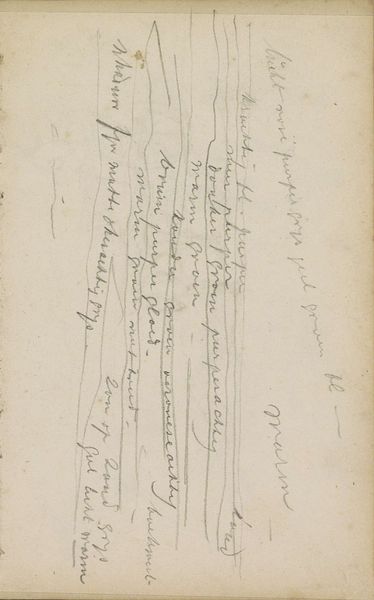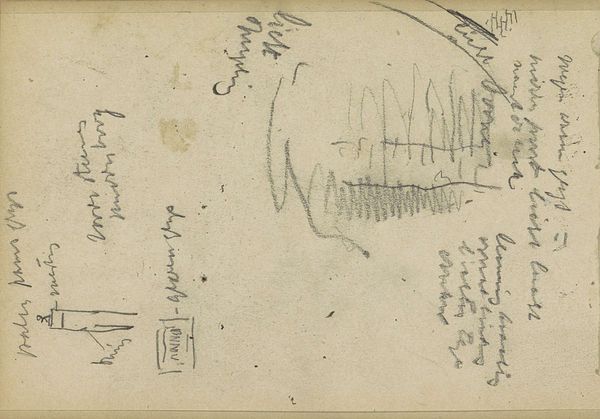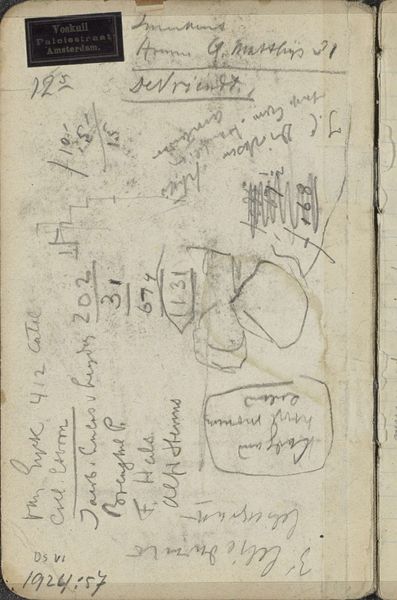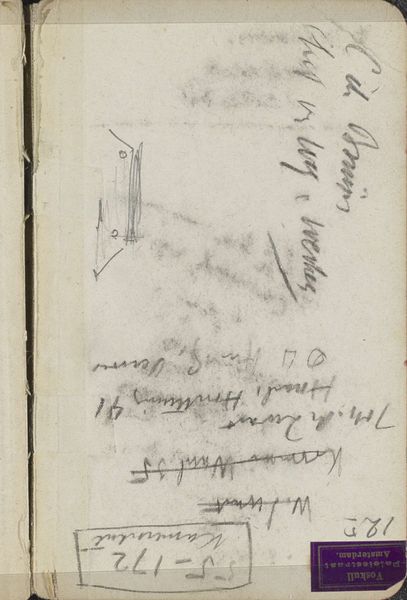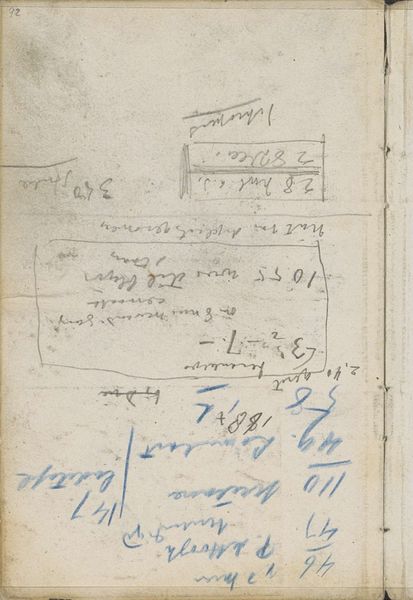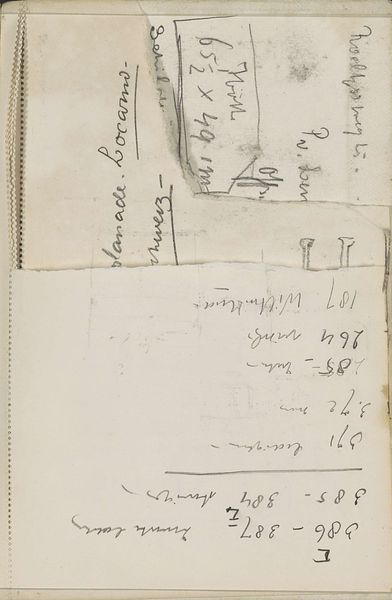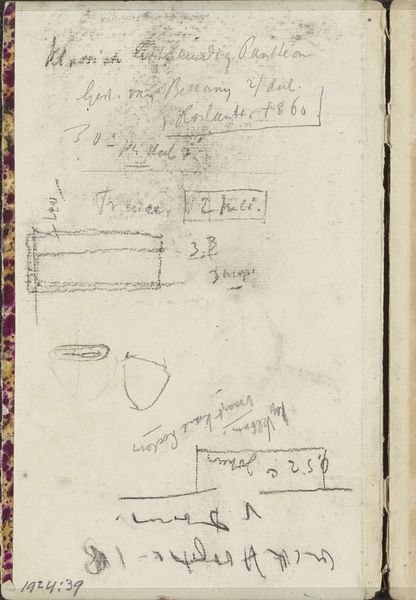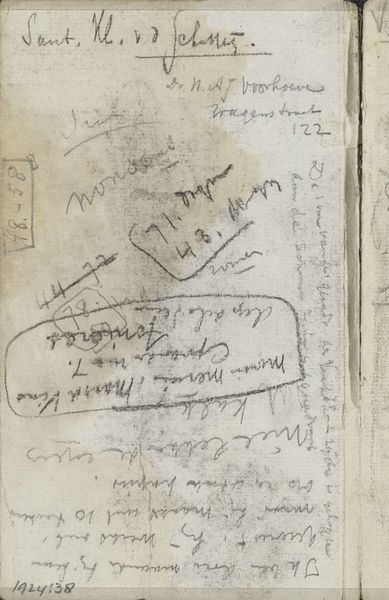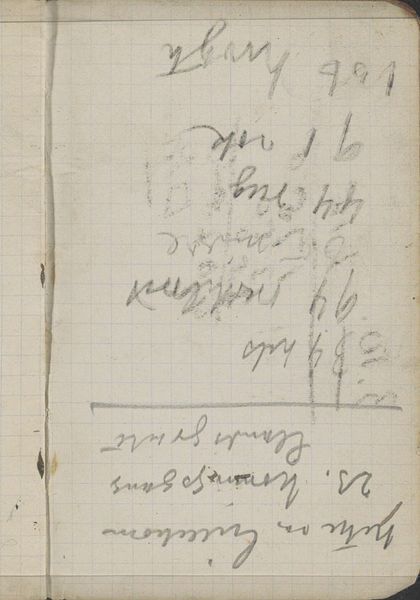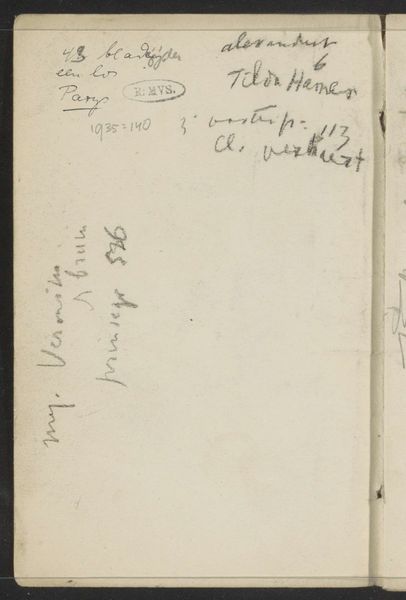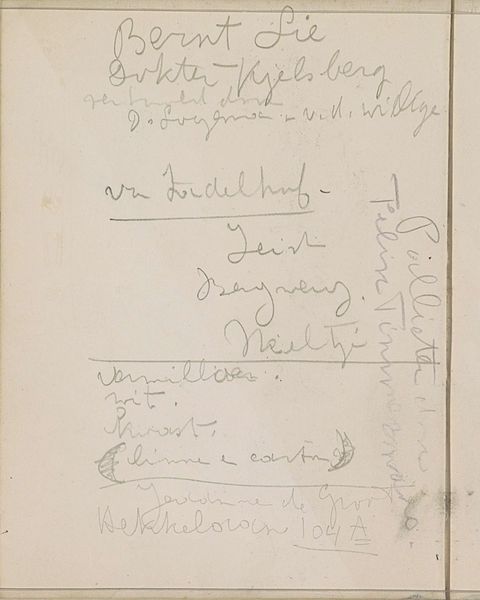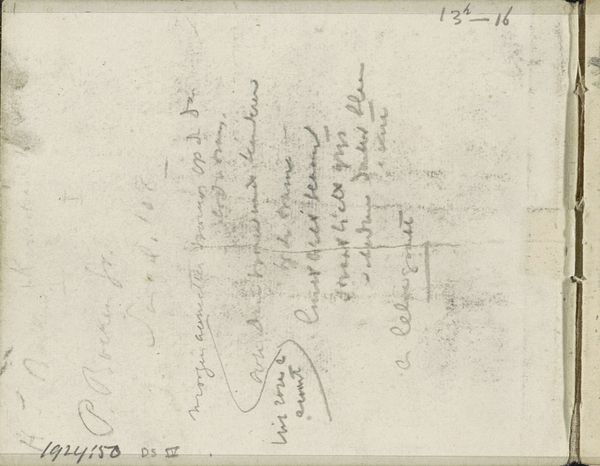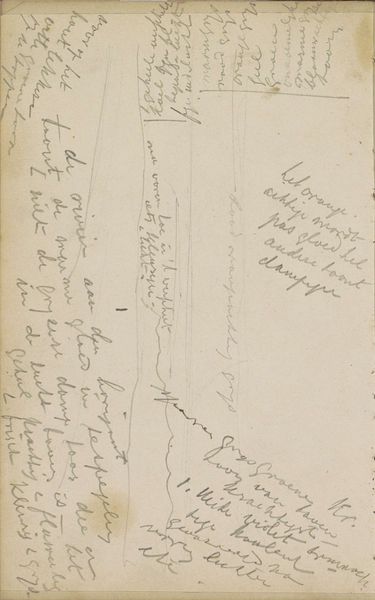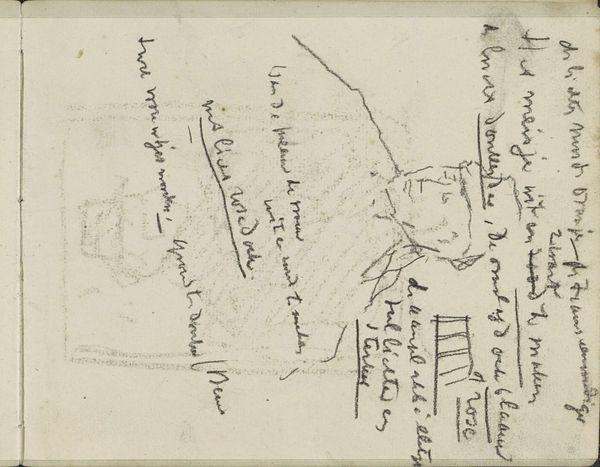
drawing, paper, pencil, graphite
#
drawing
#
impressionism
#
pen sketch
#
sketch book
#
hand drawn type
#
paper
#
personal sketchbook
#
sketchwork
#
intimism
#
pen-ink sketch
#
pencil
#
pen work
#
graphite
#
sketchbook drawing
#
sketchbook art
#
initial sketch
Copyright: Rijks Museum: Open Domain
Curator: This is “Annotaties,” a sketchbook page by George Hendrik Breitner, from around 1883-1885, done in pencil, graphite, and pen on paper. It’s currently at the Rijksmuseum. Editor: It looks like a glimpse into his private thoughts. I'm drawn to the script-like arrangement of lines and scribbled notes; it gives the work a unique feeling. What can you tell me about this? Curator: Absolutely. Breitner was an artist deeply invested in portraying modern life, and sketchbooks like this one offer a window into his creative process. These "annotations" invite us to consider the relationship between language, memory, and representation within a rapidly changing society. We need to think of this in a society where art moves more quickly from academic spaces and is starting to include the art of everyday life. Editor: Representation…in what way? Curator: Look closely. It seems almost like a form of automatic writing, capturing fleeting thoughts, street scenes, or impressions. What's compelling is to consider this act of sketching, not just as preparatory work, but as a form of embodied experience, marking his place and time within urban space. His annotations are performative. Editor: So it is less a defined work of art and more documentation? Curator: I want to resist that thought. By sharing what is traditionally very private—a glimpse into the artist's notes—we also confront conventional views about artistic genius. It demands we consider labor, process, and intention that are very crucial today. Editor: That makes sense. It's interesting to consider this private glimpse now made public and how it reshapes our perception of art creation. Thank you! Curator: Indeed! It shows us how understanding the artistic process and the artist's interaction with their surroundings enables a deeper understanding of both the work itself and its socio-historical implications.
Comments
No comments
Be the first to comment and join the conversation on the ultimate creative platform.
